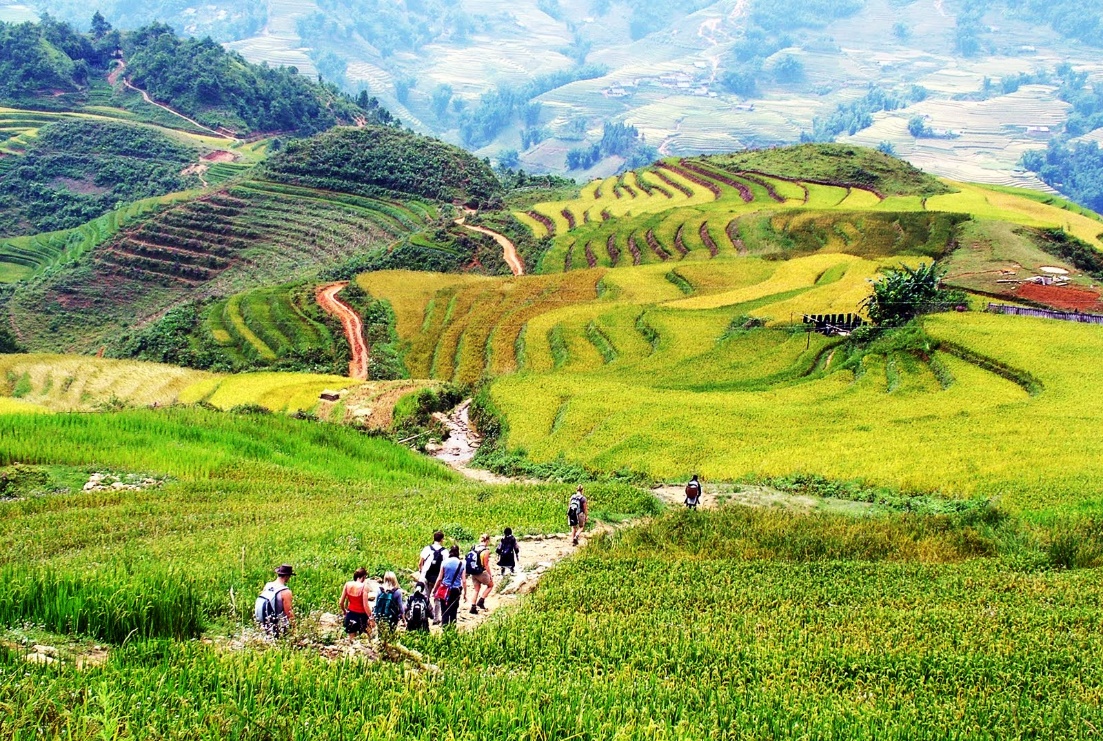Sapa

Ha Long Bay
29/10/2016
Hue
29/10/2016 Sa Pa is a mountainous District in Lao Cai province, in the Northwest highland of Vietnam and shares the border with Yunnan province of China. The average altitude is 1,500 meters. The district is home of the 3,143 meter high Fansipan peak, the highest mountain in Indochina which is located in the Hoang Lien National Park – recently recognized as an ASEAN Heritage Park. The average temperature is around 150 C year-round. In May it is summer with temperatures around 13-150 C at night and 20-250 C during the day. Sapa is known as one of the most famous hill station in Vietnam and was established by the French in 1903. From a wild land without local residents, in colonial time, the French had made Sapa become a famous heath resort and recreation center. Although was discovered by the French in 1903, before 1909, only a small contingent of colonial troops was more or less regularly stationed there. The first permanent resident group arrived in 1910. From the 1920s onwards, several wealthy colonists with enough financial capital also had a number of private villas constructed in the vicinity (Michaud and Tunner, 2006). During the first Indochina War (1945-1954), Sapa was heavily damaged and until the economic renovation in 1980s, there almost was no tourism activity in Sapa. In 1990, Vietnamese government promoted national tourism industry by organizing event “National Tourism Year” and after 3 years, in 1993, Sapa was officially opened up for international tourists. In October 2003, Sapa, a hill town of 6,000 inhabitants, celebrated what local state officials announced to be the ‘‘100 year anniversary of tourism in Sapa’’.
Sa Pa is a mountainous District in Lao Cai province, in the Northwest highland of Vietnam and shares the border with Yunnan province of China. The average altitude is 1,500 meters. The district is home of the 3,143 meter high Fansipan peak, the highest mountain in Indochina which is located in the Hoang Lien National Park – recently recognized as an ASEAN Heritage Park. The average temperature is around 150 C year-round. In May it is summer with temperatures around 13-150 C at night and 20-250 C during the day. Sapa is known as one of the most famous hill station in Vietnam and was established by the French in 1903. From a wild land without local residents, in colonial time, the French had made Sapa become a famous heath resort and recreation center. Although was discovered by the French in 1903, before 1909, only a small contingent of colonial troops was more or less regularly stationed there. The first permanent resident group arrived in 1910. From the 1920s onwards, several wealthy colonists with enough financial capital also had a number of private villas constructed in the vicinity (Michaud and Tunner, 2006). During the first Indochina War (1945-1954), Sapa was heavily damaged and until the economic renovation in 1980s, there almost was no tourism activity in Sapa. In 1990, Vietnamese government promoted national tourism industry by organizing event “National Tourism Year” and after 3 years, in 1993, Sapa was officially opened up for international tourists. In October 2003, Sapa, a hill town of 6,000 inhabitants, celebrated what local state officials announced to be the ‘‘100 year anniversary of tourism in Sapa’’.
 Ethnic groups and their traditional cultures are being seen as tourism amenities in Sapa. Now, there are four main ethnic groups in Sapa, among whom the Hmong account for 52%, the Dao 25%, the Tay 5%, the Day (Giay) 2%. Kinh people have just migrated to Sapa since it was developed as an international tourism destination and mainly for business purposes.
Ethnic groups and their traditional cultures are being seen as tourism amenities in Sapa. Now, there are four main ethnic groups in Sapa, among whom the Hmong account for 52%, the Dao 25%, the Tay 5%, the Day (Giay) 2%. Kinh people have just migrated to Sapa since it was developed as an international tourism destination and mainly for business purposes.
Sapa’s terraced fields are now one of the most favorite destinations of both national and international visitors, and were recently recognized as one of the world’s seven most beautiful and magnificent terraced fields in the world by the US-based Travel & Leisure magazine.

